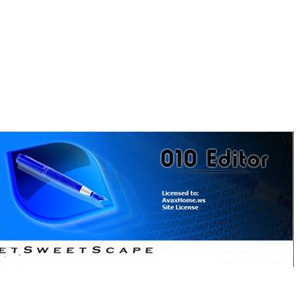

- #010 EDITOR SWITCH STATEMENT PATCH#
- #010 EDITOR SWITCH STATEMENT CODE#
- #010 EDITOR SWITCH STATEMENT WINDOWS#
It will randomize placement of basic blocks and randomize its register allocator to evade naive signatures.
#010 EDITOR SWITCH STATEMENT CODE#
SCC can generate code with signature and analysis evasions built in.

In addition, it has CPU support for x86, x86_64, PPC32, MIPS32, Arm (not thumb), and quark (a custom CPU architecture). It supports MacOS, Windows, Linux, and FreeBSD platforms.

SCC is a custom, from the ground up, C compiler. SCC is frequently much easier than writing assembly code. It’s also helpful for small binary modifications. SCC is a minimal C compiler useful for writing small injectable code for many architectures and platforms. One of the best kept-secrets about Binary Ninja is the Shellcode Compiler (SCC). In-depth assemblyįor more in-depth changes, you’ll want to use one of:įor all built-in architectures that aren’t x86 or 圆4, we use a custom LLVM build. Please send us bug reports of specific instances. One caveat: while we strive to make sure all our disassembly/re-assembly can round-trip, there are occasions where this does not work either from formatting differences or missing instructions. This is most common with variable instruction length architectures (here’s looking at you, x86 and 圆4), but could occur when mixing architecture types of different lengths. In instances where the replacement instruction does not evenly align with the number of bytes it is replacing, the instruction will be padded out with NOPs of the appropriate length. The text of the assembly now becomes editable and once you press enter, Binary Ninja assembles replacement bytes and writes them in place.
#010 EDITOR SWITCH STATEMENT PATCH#
Select the line of assembly you want to modify, then press e or use the right-click Patch / Edit current line menu. Inline editing allows for quick modification of a single line of assembly. There are other options hiding away in that Patch menu. Note: if you select a conditional branch, Convert to NOP isn’t shown since it’s the same as Never Branch! Inline Skating Edits The plugin handles variable-width instructions, automatically using the appropriate number of bytes. The other two-click patch available is the Convert to NOP option which does what it says on the tin: it will NOP out a specific instruction. It’s simple, to the point and does exactly what you’d expect. This patching requires very little explanation. Use Invert Branch in cases when you want the opposite behavior from the default. Force a branch to Always Branch or Never Branch. The patch menu has a number of options dedicated to modifying conditional branches. For example, the right-click patching menu requires only two clicks. For mere mortals, we have a number of other patching methods that require less low-level familiarity with native opcodes. Of course, binary patching via, well, binary, only makes sense if you are either changing data or really know an architecture well. Here’s an example using it to modify a structure and seeing the decoded result live: This live preview functionality is also useful for more than just disassembly of opcodes. In those cases, you may want to copy/paste the larger chunks of hex into place to make the overwrites atomic. Note that for some large functions this may be a bit slower. You’ll see the function updated while you type.
#010 EDITOR SWITCH STATEMENT WINDOWS#

Maintaining or updating legacy applications.To test a change without a long build process.Why would you want to be able to patch or modify an existing binary? Many reasons: (The other–“What is the main strength of Binary Ninja?”– is always the api and the platform that it provides for other scripts and plugins to build on.)īut “How is Binary Ninja better than X?” For one, our ability to change binaries quickly and easily. That’s one of the most common questions we hear.


 0 kommentar(er)
0 kommentar(er)
